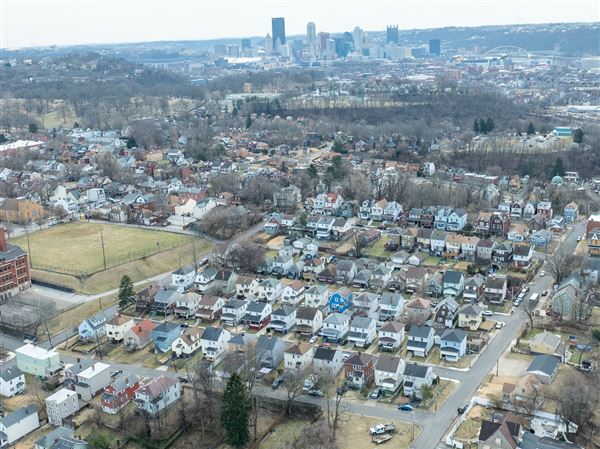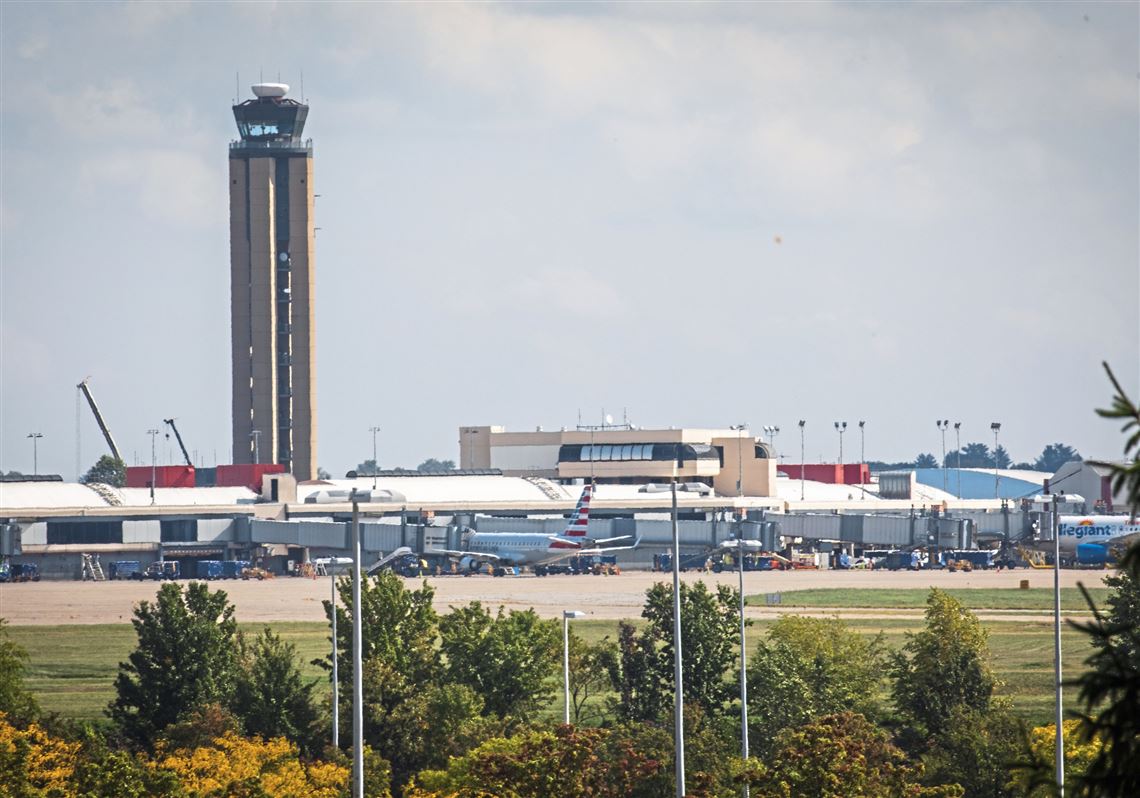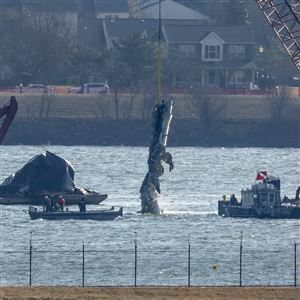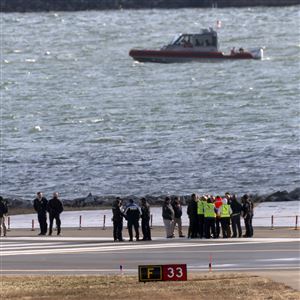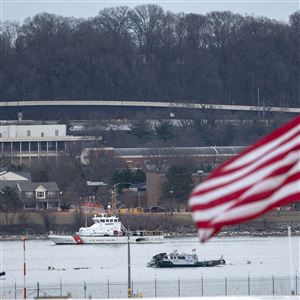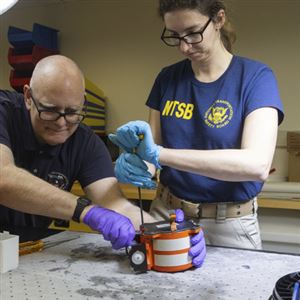The deadly collision of a passenger plane and military helicopter above the nation’s capital last week that left scores of passengers dead has sparked alarms over aviation safety amid a shortage of air traffic controllers across the country.
While the control tower was not fully staffed during the devastating accident at Reagan National Airport, records show that hundreds of airports — including the tower at Pittsburgh International Airport — have operated at levels that are considered by experts to be far below safety thresholds.
An analysis of federal data shows that the vast majority of airport towers nationally — about 98% — do not meet the staffing levels recommended by the Federal Aviation Administration and controllers’ union, the Pittsburgh Post-Gazette has found.
"We haven't had enough air traffic controllers in America for a very long time," Transportation Secretary Sean Duffy told Fox News Sunday. “They are stressed out. They're tapped out. They're overworked. That's no excuse. It's just a reality of what we have in the system."
For Pittsburgh, the staffing is 30% below the threshold. At Philadelphia International Airport, it’s 45% and at Northeast Philadelphia Airport — where a small medical jet plunged to the ground after takeoff on Friday night — it’s 43% lower than what regulators and controllers say is needed.
While the crash near Philadelphia, which left seven people dead, is likely not related to staffing shortages, the lack of controllers reignites longstanding concerns about why the federal agency hasn’t filled one of the most critical jobs in air safety.
The midair collision near Washington, D.C., on Jan. 29, which resulted in the deaths of 67 people, is still under investigation, but published reports show that two people were handling the jobs of four at the time of the disaster.
Mr. Duffy raised his own concerns while appearing on “Fox News Sunday.”
“I'll take the Federal Aviation Administration at their word that [staffing] wasn't normal," he said.
Scores of warnings have been logged into the NASA database from pilots taking drastic actions over the years to keep from colliding into other aircraft when trying to take off or land at airports, and from air traffic controllers who complained anonymously about the impact of staffing on their ability to do their jobs.
Safety experts say airports like Pittsburgh and Philadelphia are still capable of safely directing hundreds of flights every day, but they acknowledge that understaffing puts enormous stress on people who are already performing high-pressure duties.
“It’s not an easy job,” said Arthur Wolk, a well-known aviation lawyer and air safety expert in Philadelphia. “It’s high pressure,” and it’s “difficult getting people trained.”
An FAA report released last year provided the number of air traffic controllers at 313 facilities and underscored the need to hire and train thousands of new positions.
The agency said it needed to recruit nearly 11,000 new controllers over the next five years to replace retiring personnel and fill the gaps to meet thresholds set by the regulators and the union.
The Allegheny County Airport Authority referred questions from the Post-Gazette to the FAA, which did not respond to an interview request to discuss the shortages.
The data from 2023 shows that some of the busiest airports in the nation — including Atlanta’s Hartsfield-Jackson International Airport, Los Angeles International Airport, New York’s LaGuardia Airport — all needed to recruit more controllers to fill the ranks.
Among the towers that needed the most staffing: New Jersey’s Morristown Airport, Maine’s Bangor International Airport and Minnesota’s Rochester International Airport — all running at levels that are half of what they should be.
In addition to airports, data also shows there are shortages at the larger facilities that track flights between airports — known as air route traffic control centers — nearly two dozen in all.
The center near Cleveland — which is responsible for air traffic over Western Pennsylvania and a large swath of Ohio, Michigan and New York — was short at least 60 trained controllers.
The need for air safety professionals comes amid alarms issued from government watchdogs, including two studies in 2023 that followed a series of close calls at airports.
The Department of Transportation's inspector general was especially critical of the FAA, saying it “has made limited efforts to ensure adequate air traffic controller staffing at critical air traffic control facilities.”
In another review, an independent study group created by the FAA said staffing deficiencies and historically high overtime create even greater risks.
“The confluence of the issues we identified results in an erosion of safety margins that must be urgently addressed,” the panel said in a letter to the agency’s administrator.
In the wake of the reports, the New York Times chronicled hundreds of dangerous incidents in which passenger jets narrowly escaped a collision.
In one case, an airliner arriving at New Orleans’ Louis Armstrong International Airport abruptly canceled a landing to avoid running into a plane that was preparing to take off.
In another, a plane crossed the path of a flight that was accelerating for takeoff at New York’s John F. Kennedy Airport.
Three weeks later, a FedEx plane came within just 100 feet of crashing into a departing passenger jet in Austin, Texas.
As lawmakers scrambled to fill gaps in the FAA’s ranks, Congress last year approved nearly $67 billion for air safety programs and issued a directive to the aviation agency: Make the hiring and training of controllers a top priority.
But the agency’s problems have been years in the making — and experts say they’ll take years more to address.
The COVID-19 pandemic hit the ranks of air traffic controllers hard as training programs ground to a halt and attrition continued to erode the ranks of those who had to continue to show up for work during the health crisis.
When the pandemic ended, years of pent-up demand among the public led to a surge in air travel that only added to the strain on one of the country’s most vital systems.
“Traffic levels accelerated way more than most anybody in the aviation industry was ready for,” said Ronald Bazman, an aviation safety consultant and retired air traffic controller. “They needed to gear back up.”
But in the years since, the agency’s rigorous and time-consuming training program hasn’t produced enough new controllers to fill the gaps in staffing, Mr. Bazman said.
“Controllers can only be trained so fast,” Mr. Bazman said, “If they hired a bunch of people today, it's going to be a year or more before those controllers have the skills to be able to substantially contribute to the safety of the system.”
Deputy Managing Editor for Investigations Michael D. Sallah contributed to this report.
First Published: February 4, 2025, 12:31 p.m.
Updated: February 5, 2025, 7:26 p.m.

